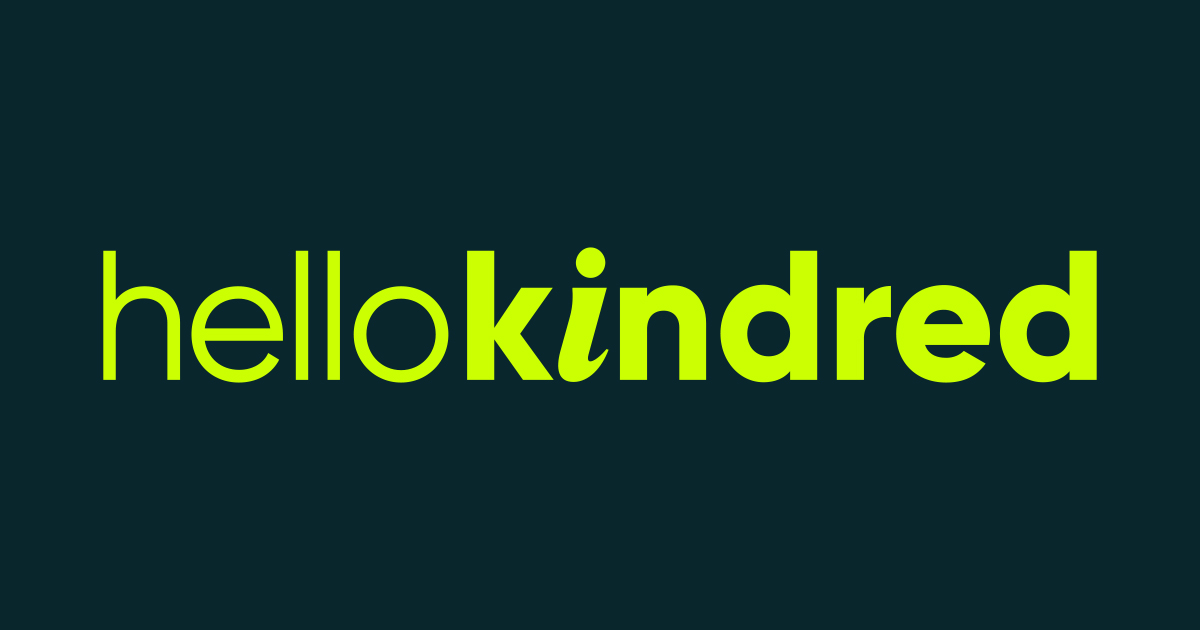Creating Diverse, Equitable and Inclusive Workplaces of the Future
02 Apr 2025

They say variety is the spice of life, and it couldn’t be more true in the world of business either. If you’re looking to cultivate an engaged, innovative and successful workforce this year, attracting and retaining the best talent with a multitude of perspectives and personalities is key. That’s because diverse and inclusive organisations are 35% more likely to outperform their competitors, 70% more likely to capture new markets, 1.7 times more innovative, and 87% better at making decisions. And employees agree too – two out of three job candidates seek out companies with diverse workforces, while 63% of employees prioritise Diversity, Equity and Inclusion (DEI) programmes when it comes to sizing up which company to work for.
So what are you waiting for?
At HelloKindred, we’ve come to realise there isn’t a one-size-fits-all playbook for rolling out a successful DEI programme – take a look at our article Learning and Unlearning: Our DEI Story as an example. We’ve come a long way though, so with that in mind, here are our top tips – as well as some words of wisdom from various other experts in the field – for building a more inclusive workplace in 2025.
Tip 1: Start with inclusion
Research suggests that beginning with an inclusive environment is critical for the success of DEI initiatives. Inclusion should precede diversity and equity to ensure diverse candidates feel welcomed and valued, and can bring their authentic selves to work. This means creating a safe space where employees can share concerns or voice their thoughts without fear of repercussion. Now more than ever, belonging is being recognised as a core goal, not just a byproduct of diversity efforts, fostering an environment where every employee is seen and heard.
From a practical perspective, start by listening to and learning from your people – they are, after all, probably your best (and most cost-effective) resource. Ask employees from marginalised groups to complete a survey or join a focus group to learn more about where your organisation may be lacking. They might experience exclusion or discrimination in small and seemingly insignificant ways you would never have thought of, such as battling in an open-plan office if they’re sensitive to noise and easily distracted.
Involve employees in your decision-making processes and analyse your recruitment, hiring, employee retention, training and everyday processes through a DEI lens to develop policies supporting employees both in and out of the workplace. Consider childcare support for women leaders as an example, or adapt DEI strategies to include remote workers so that they feel connected and valued despite physical distance.
Likewise, as organisations expand globally, there is an increasing need to develop cultural awareness and competency. This means understanding and respecting diverse cultural norms and values, and fostering a workplace culture inclusive of all backgrounds and experiences. An effective first step is to put together a DEI calendar so that the holidays and important dates for different employee groups aren’t forgotten. It’s quick and easy to integrate into your planning, helps to create an inclusive workplace environment, and shows your commitment to supporting cultural diversity all year round.
Tip 2: Get leaders invested
2025 will mark a shift in leadership development, with inclusive leadership being recognised as a critical competency. Impactful DEI initiatives require the commitment of senior leaders to demolish exclusionary systems and policies – if managers are truly intentional and accountable, actively demonstrate a commitment to DEI, track performance metrics and assess DEI goals regularly, this sets the tone for your entire organisation. If you haven’t started already, now’s the time to invest in training your leaders – not just how to manage diverse teams, but to lead inclusively, create equitable opportunities, enhance cultural competencies, eliminate unconscious bias and actively foster an environment where all employees feel valued and included.
Likewise, all employees in your organisation should be undergoing regular diversity training. Go beyond basic awareness and focus on teaching actionable skills your people can apply in their daily lives. Model real-life scenarios for employees to help them see the value in diversity and become advocates for inclusion, understand their biases, and learn how to step in when a discriminatory or unfair situation arises.
Tip 3: Build a data-driven DEI strategy
To ensure your DEI initiatives are targeted and impactful, access to high-quality data is essential. Using a variety of real-time data sources such as demographics, recruitment, retention, pay equity, employee engagement and promotion rates, enables you to figure out exactly where you’re at regarding your DEI goals and identify the areas where more work is needed.
According to Diversity Atlas, every DEI initiative should have clearly defined and measurable goals that result in tangible organisational improvements. This could be anything from improving employee engagement and retention to increasing diversity in leadership and closing pay gaps. Robust data collection and evaluation metrics, as well as benchmarking and evaluation methods, play a key role in assessing the effectiveness of these efforts, allowing leaders to track outcomes, adjust strategies when needed and ensure DEI initiatives lead to real, sustainable change. This approach builds trust, demonstrates a genuine commitment to fostering an inclusive culture, and facilitates an environment of continual growth and improvement.
It’s how we work at HelloKindred too. We collect applicant demographics to identify gaps in recruitment and pinpoint how our workforce makeup compares to the marketplace that has historically been, and is presently, disadvantageous to equity-seeking groups. This data has helped us better understand who may be excluded in our recruiting and hiring efforts, in turn devising policies to better attract and hire stronger representation from marginalised groups. Read more about the steps we’re implementing as a business in our article Inside our Transformation to a Diverse and Inclusive Agency.
Tip 4: Harness the power of AI
Artificial intelligence will significantly improve an organisation’s ability to address bias and create a more inclusive culture. In our never-ending search for top talent, for example, we use AI to reduce bias in recruitment by analysing job descriptions, screening candidates and identifying patterns of discrimination in hiring processes. Among many other uses, it can also help employers monitor workplace equity, track promotion rates and analyse pay discrepancies across demographics. Virtual reality programmes can even be implemented to allow employees to experience different cultures and perspectives firsthand. In a nutshell, AI is an essential tool for every business.
Tip 5: Make DEI a core business competency
An important trend this year will be the continued evolution of diversity, equity and inclusion from a compliance ‘must-do’, to a dedicated business function that directly impacts an organisation’s strategic goals and bottom line.
Businesses worldwide are recognising that DEI is now a core business driver, enhancing innovation and competitive advantage. As a result, companies are beginning to establish dedicated ‘diversity business units’, with their own teams, budgets, KPI’s and leadership. In this way, DEI becomes entrenched in every aspect of the organisation while contributing to its overall growth and success.
Alongside this, businesses will be scrutinised for their DEI efforts like never before. All stakeholders, whether employees, customers or investors, will demand legitimacy and transparency, pressuring companies to rightly, move beyond compliance towards successful and sustainable DEI commitments. The evolving regulatory landscape will also have an impact, ensuring diversity initiatives are legally sound and adhere to changing laws and regulations.
Tip 6: Use DEI to attract and retain top talent
Now more than ever, job seekers are looking for an employer that genuinely values DEI.
CaseIQ has a great place to start – show potential employees how much diversity, equity and inclusion means to you by creating a personalised DEI mission statement. Keep it upbeat and aligned with your ‘company voice’. As an example, an excerpt from HelloKindred’s reads: “We know we must put the work into educating ourselves and staying informed on critical DEI topics. Instead of relying on marginalised groups to tell us where we’re going wrong, we immerse ourselves in the relevant resources, making good use of toolkits from diversity and inclusion organisations to steer our tracking and reporting data on demographics. Crucially, we are always listening and always learning, and we expect the people who work with and for us to commit to doing the same.”
In addition, provide examples of DEI organisations you’re partnering with. We’re members of the Canadian Gay and Lesbian Chamber of Commerce, the Canadian Aboriginal and Minority Supplier Council, a BBBEE Level 2 Certificate holder in South Africa, and a certified Small and Medium Enterprise in the United Kingdom.
Similarly, implement initiatives that make your current employees want to stick around too. A recent survey found that 78% of workers want their employer to prioritise DEI, but nearly a quarter think that their employer is “not doing enough” in the DEI space. Soquite simply – make sure you are. Put the basics in place first and foremost – prioritise equal pay for equal work, inclusive healthcare benefits, robust anti-discrimination policies, and equity and inclusion in professional development opportunities.
Tip 7: Take a multi-faceted, focused approach
With organisations made up of so many different and diverse groups, it’s critical to adopt a multi-pronged approach when it comes to DEI.
For physically impaired individuals for example, this should involve implementing comprehensive audits to ensure all digital and physical workspaces are accessible and user-friendly.
For LGBTQ+ equality, companies could offer gender-neutral bathrooms and introduce Employee Resource Groups (ERGs) to help build a culture of acceptance.
In the neurodiversity space, companies are increasingly recognising the innovation and problem-solving skills individuals with neurological differences – such as autism, ADHD and dyslexia – bring to the table. As a result, 2025 will more than likely see an increase in initiatives aimed at helping neurodivergent employees. Tailored recruitment processes, specialised career development programmes, quiet workspaces and flexible job roles, are some good options to consider.
At the end of the day, it’s all about embracing diversity and the many benefits it’ll bring to your organisation.
Diverse and inclusive teams make the world a better place, and we’re here to help you find them. Whether you’re looking to fill a marketing, creative or digital role for a short or long-term contract, our global pool of talent is waiting to deliver. Say hello.




